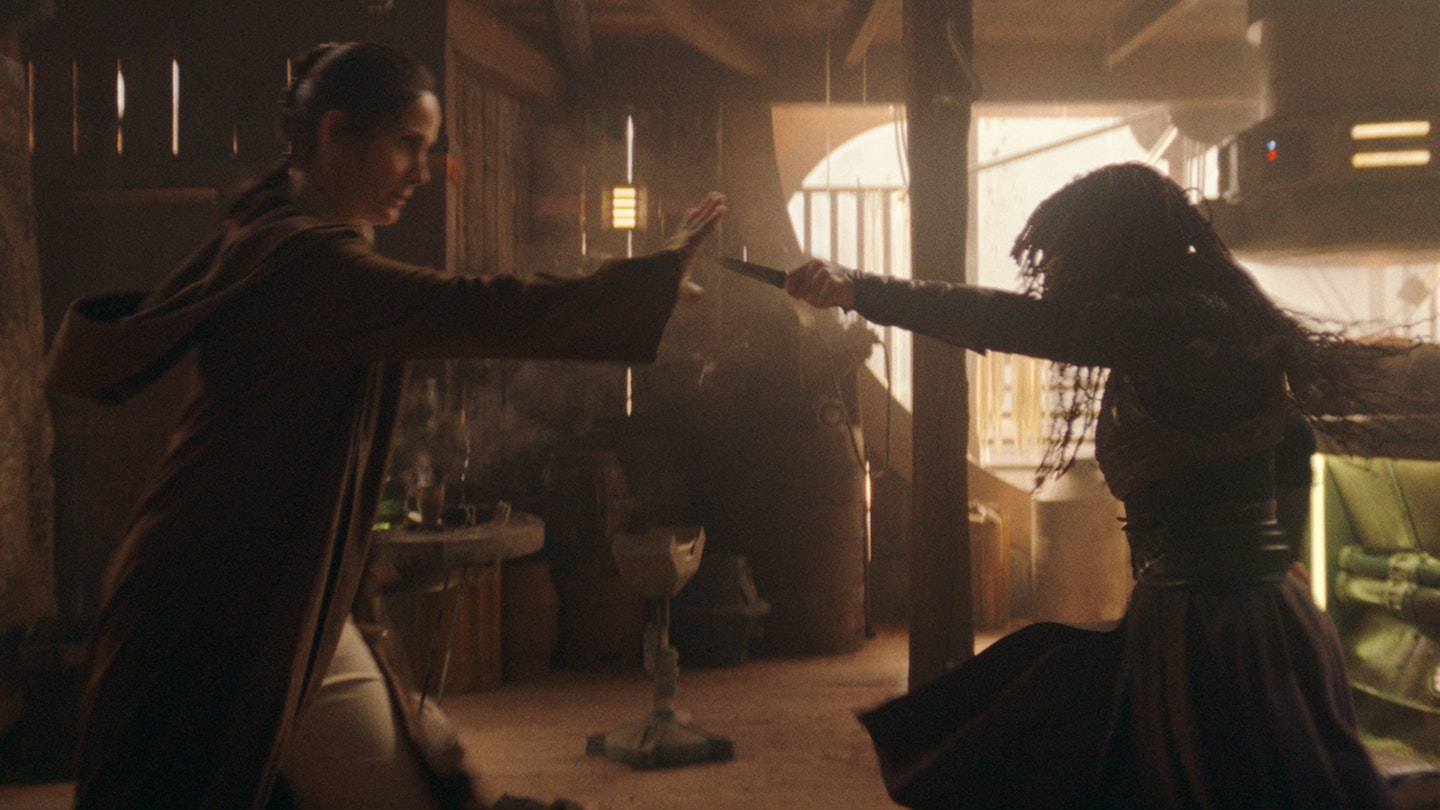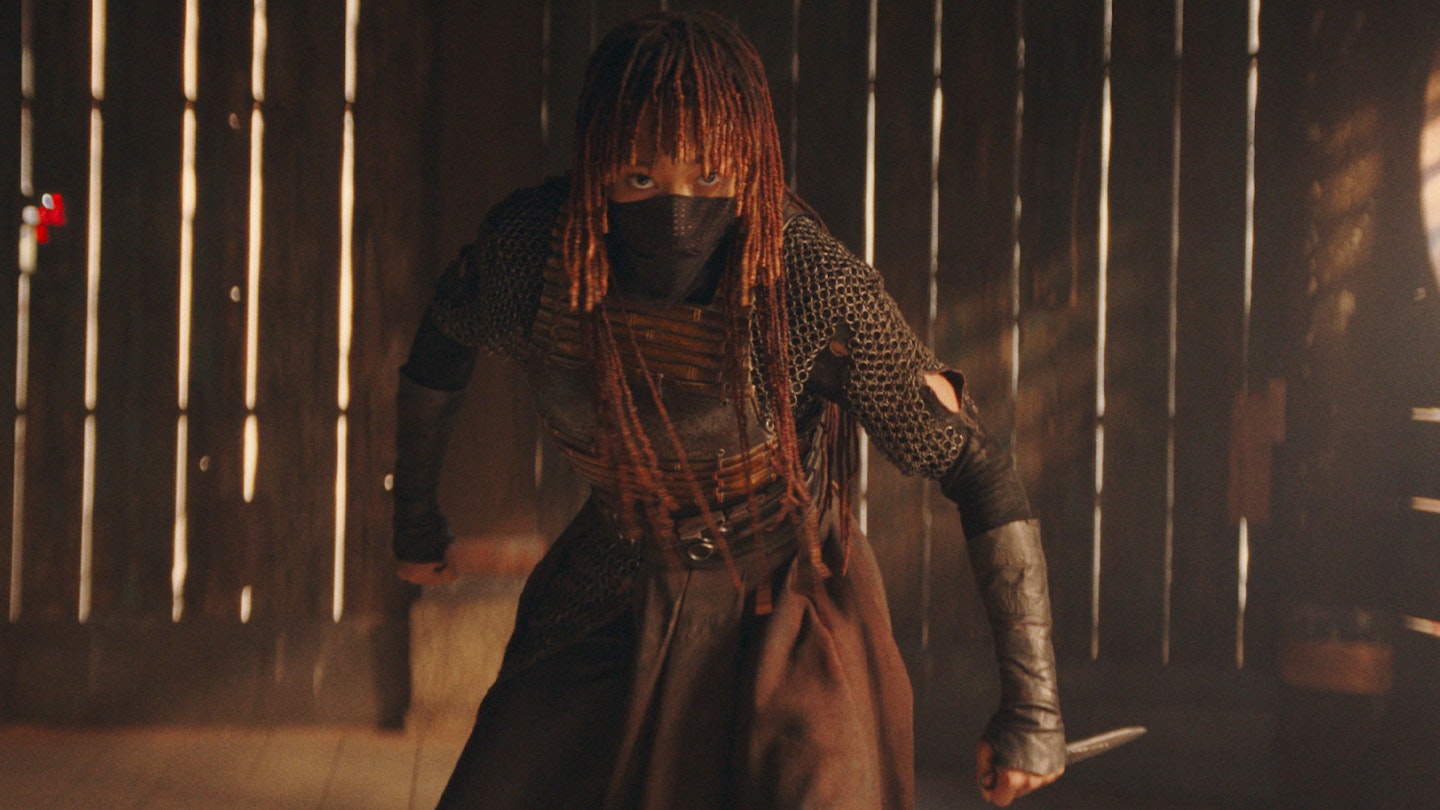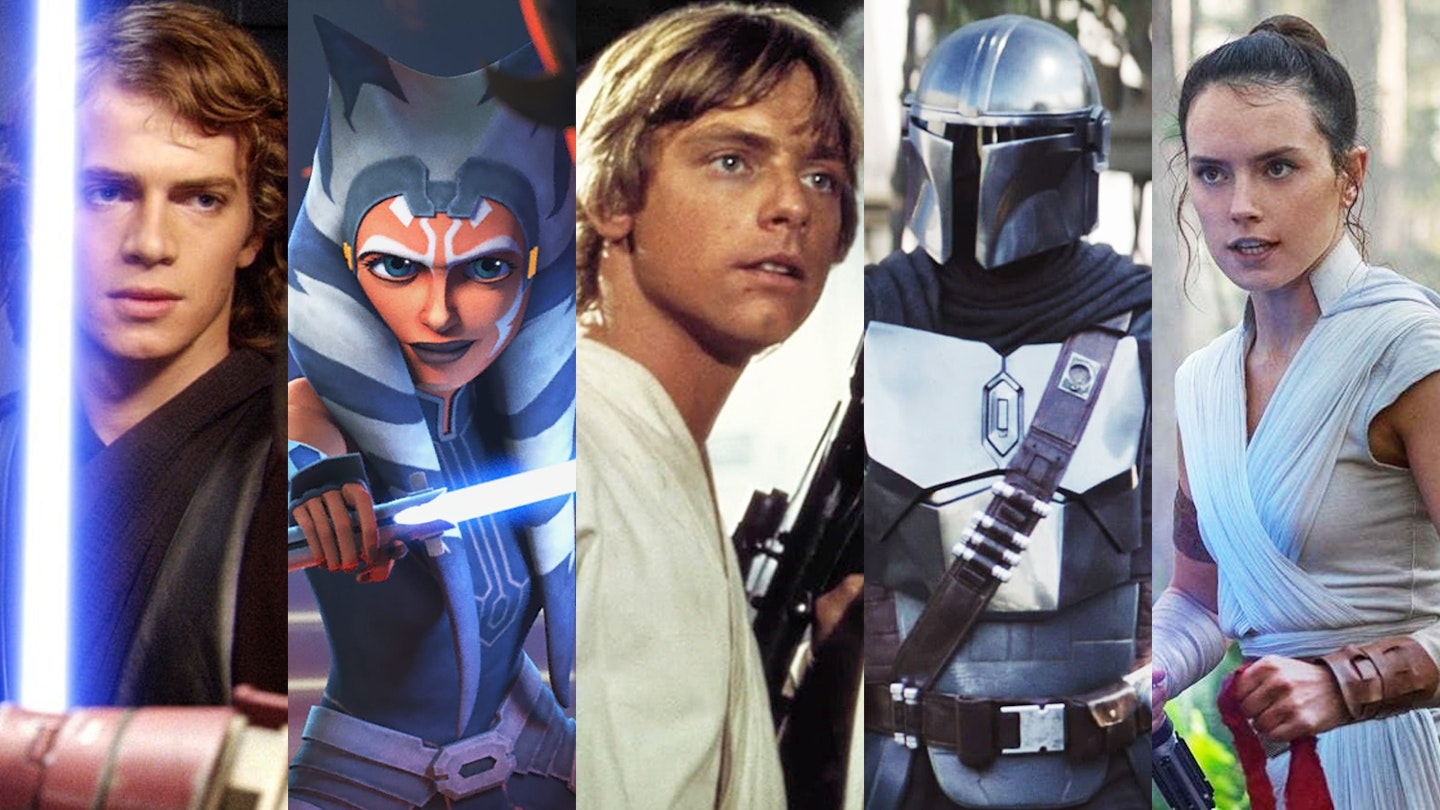Streaming on: Disney+
Episodes viewed: 4 of 8
A girl walks into a bar — stop us if you’ve heard this one. Picking her way through tables crowded with a menagerie of alien patrons, she squares up to a figure in Jedi robes. The resulting fracas is something you definitely won’t be familiar with — at least not from Star Wars. A whirlwind of wuxia-inspired fists and feet, the series prologue has the flavour of Hong Kong action cinema, but with a distinctly Star Wars twist — punches and parries augmented with Jedi abilities that block and throw with unseen power. It’s an arresting display of precision-choreographed Force-fu that unfolds (almost) without either party reaching for a lightsaber. As openers go, this seizes you by the throat like a Force choke — a clear statement of intent from showrunner Leslye Headland.

The Russian Doll creator reportedly pitched The Acolyte as “Frozen meets Kill Bill”, and the influence of the latter can be felt from the off, the series’ opening brawl owing no small debt to Tarantino’s House Of Blue Leaves. Here, masked assassin Mae (Amandla Stenberg) is on her own roaring rampage of revenge, hunting down a select group of Jedi with a mind to making them Force ghosts before their time. Such murky motivation makes for an unusual entry point, and while several of the other Star Wars shows have trailed a finger in the same morally ambiguous waters, it’s unsettling to have a protagonist who’s so openly homicidal. Her prey, on the other hand, make for more traditional Star Wars fare, except these Jedi hold their heads a fraction higher than most, their tone a little haughtier — both side effects of the series’ atypical setting.
While decidedly new, The Acolyte still feels very familiar.
The first screen property entirely unshackled from the Skywalker saga, The Acolyte unfolds a full century before The Phantom Menace, playing out during the twilight of the High Republic era, with the Jedi at the height of their power. From hard-eyed masters Indara (Carrie-Anne Moss) and Sol (Squid Game’s Lee Jung-jae), to Force Wookiee Kelnacca (Joonas Suotamo), Jedi jobsworth Yord (Russian Doll’s Charlie Barnett) and eye-rolling Padawan Jecki (Dafne Keen), the now golden-robed ascetics have a distinct edge to them, betraying a darker side (not that dark side) to the guardians of peace and justice than we’re accustomed to. It makes for a refreshing textural change, with the Jedi here possessed of an authoritarian air, depicted as part of a self-righteous, heavy-handed institution in need of being taken down a peg or two.
All of which goes a long way towards making the show’s central premise work. Mae, while initially positioned as an antagonist, is soon revealed to be clear-eyed in her convictions and, as more backstory reveals itself (aided in large part by an early flashback episode — the series high-point so far), we begin to wonder if her grievances might not be a little justified. Of all the things that set the High Republic apart from other Star Wars eras, the most striking is that so many of the Jedi are absolute tools.

For viewers already steeped in the High Republic thanks to the recent glut of tie-in novels and comics, the setting will be less novel, even featuring a few familiar faces like lime-tinted Mirialan Jedi Vernestra Rwoh (Rebecca Henderson). And while the glossiness of this barely used universe (its aesthetic falling somewhere between the Original Trilogy’s grime and the Prequels’ pristine sheen) takes a little getting used to, the livery remains distinctly Star Wars: Trade Federation stalwarts the Neimoidians make a return (now thankfully divested of their problematic accents), a new merchandise line is introduced with Pip the pocket droid (a cross between a tricorder and a lunch box), and we’re brought inside a coven of Force Witches reminiscent of (but distinct from) the Dathomiri Nightsisters last seen in Ahsoka. All of which contribute to an environment that, while decidedly new, still feels very familiar. Which is unfortunately part of the problem.
There’s no getting around the fact that 2022’s Andor set off a thermal detonator in the Star Wars TV universe. Where once the simple existence of small-screen Jedi antics might have been enough to prompt excited cries of ‘yub-nub’, now even the clash of multi-hued lightsabers rings slightly hollow when compared to the character depth, emotional resonance and thematic weight of Cassian’s saga. Despite its impressive action chops and centring of a cowled killer, The Acolyte can’t help but feel slight and unambitious by comparison. Even stood against more direct peers in The Mandalorian and Ahsoka, the characters here are thinly drawn, often weighed down by overly functional dialogue. Manny Jacinto does provide some light comic relief as dodgy apothecary Qimir and there’s a rat man called Basil, but the overly earnest tone could have done with a lighter touch. And while The Acolyte is presented as a mystery, gradually unfolding to reveal the bigger picture (most pertinently the identity of Mae’s mask-wearing benefactor), the various questions it poses never quite get under your skin as much as you’d like them to.
Practical sets and location shoots are a welcome change from Obi-Wan’s reliance on soulless LED screens, however, and there’s certainly much to love about the series’ embrace of flashy hand-to-hand combat. But while it might be unfair to hold this broader heartland series up against Andor’s edgy, adult-oriented outlier, The Acolyte so far is not the bold stride forward we’d hoped for.








